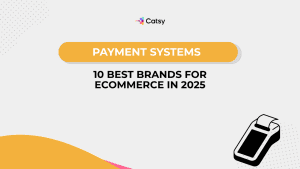7 Key Components of a Winning Product Marketing Strategy
So, you’ve got this awesome product idea, right? Maybe it’s already built, or maybe you’re still fine-tuning it. Either way, here’s what you should know: having a great product isn’t enough anymore.
You need a solid game plan to get it out there. Not just any plan though… I’m talking about a real-deal, thought-out product marketing strategy that helps people get what your product is about and why they should care.

What Is a Product Marketing Strategy?
Think of a product marketing strategy as your go-to game plan. It’s the step-by-step roadmap that shows you how to explain what your product does. Product marketing strategy helps to understand why your product matters and how to get it into the hands of the people who’ll love it most. Just a clear path from idea to launch (and beyond).
Here’s what it helps you do:
Figure out who your ideal customer is.
Who’s this product really for? You’ll dig into their needs, wants, pain points, and behaviors so you can speak their language and actually solve their problems. No more guessing.
Nail the messaging.
This is all about what you say and how you say it. The right message can make someone think, “Wow, this is exactly what I’ve been looking for!” So it’s worth getting it right.
Launch your product smoothly.
No last-minute chaos here. With a solid strategy, you’ll have a plan in place to build buzz, reach the right people, and kick things off without a hitch.
Support your sales team.
You’ll arm them with what they need, think pitch decks, product sheets, and those quick one-liners that make all the difference in a pitch. So they’re not just selling, they’re winning.
Keep customers happy after the launch.
A great strategy doesn’t stop at launch day. It helps you keep folks engaged, supported, and coming back for more. Because retention = gold.
So yeah, at the end of the day, it’s all about connecting the dots, from the product you’ve worked so hard to build to the people it’s meant to help. Simple, right?
In this Article
Why Does It Matter?
Well, here’s the thing… without a strategy, you’re kind of winging it. And let’s be real, nobody wants to pour their heart (and budget) into building a product only to hear crickets when it finally launches. Can you imagine that? All that work, and no one even notices?
That’s why having a solid product marketing strategy is something every business should strive to have. With the right plan in place, you can:
- Launch your product faster and smoother (no more scrambling last minute),
- Actually stand out in a sea of lookalike products (because let’s face it, the market is crowded),
- Build stronger, more loyal relationships with your customers (so they keep coming back), and
- Stay flexible and ready to adapt when things shift, whether it’s the market, your audience, or even your product itself.
Pretty important stuff, right? It’s like giving your product its best shot at success instead of leaving it up to chance. So, what do you think, worth having a strategy in place?
1. Define Customer Personas
Let’s start with the basics, who are you selling to?
You won’t believe this, but so many businesses skip this part. They try to sell to everyone and end up disconnecting with their customers.
Here’s what you need to think about:
- Age, gender, location, job title (you know, the usual stuff)
- What keeps them up at night? What are they struggling with?
- Where do they hang out online? What do they like to read/watch/buy?
- What triggers them to make a purchase?
Use interviews, surveys, even your Google Analytics data.
Make Catsy DAM and PIM Software an Extension of Your Team
Book a Free Demo2. Do a Competitive Analysis
Next, take a look around. Who else is out there doing what you’re doing?
You’re not copying them, but you do want to know:
- What features do they offer
- How do they price things
- What their customers are saying (reviews = gold)
- Where they shine… and where they fall short
Try putting it all into a simple SWOT chart (strengths, weaknesses, opportunities, threats). It really helps you see where you can stand out.
3. Craft a Clear Product Positioning Statement
Alright, now that you know who you’re talking to and who else is in your niche, it’s time to position your product.
So, how do you want people to think about your product?
Here’s a simple formula:
“For [target audience], our [product] is a [category] that [benefit], unlike [competitor/product alternative].”
Example:
“For small eCommerce teams, our product is a user-friendly PIM that helps manage content chaos, way easier than spreadsheets or clunky legacy tools.”
4. Build a Messaging Framework
You’ve got the what, now let’s talk about the how.
Messaging framework = your cheat sheet for saying the right thing to the right person at the right time.
It should include:
- Core value prop (what makes your product awesome)
- Messages for each persona (because different folks care about different things)
- Feature-to-benefit mapping (translate techy stuff into real-life benefits)
- Brand tone (Are you playful? Professional? Chill?)
- Objection responses (What will people doubt, and how do you squash that?)
It’s like giving your whole team one big megaphone with the same message.
5. Plan Your Go-To-Market (GTM) Strategy
Okay, now for the fun part, launch time!
But wait, you’ll need a GTM strategy to actually get your product out the door the right way.
What to map out:
- Who exactly you’re targeting first
- Where you’re finding them (email? social? events?)
- How you’ll sell (online? through partners?)
- Your pricing + packaging
- The timeline for launch (with clear checkpoints)
Tip: Bring product, marketing, and sales together for this part. It’s a team effort!
6. Promote & Launch the Product
Now it’s go-time.
This is when your audience first sees your product out in the world, so make it count. Create some hype!
Here are a few ideas:
- Email countdown or teaser campaigns
- Sneak peeks on social media (maybe with influencers?)
- Webinars or live demos
- PR outreach or press kits
- Paid ads to drive traffic
And don’t ghost your early adopters after launch, keep the conversation going. Show them love!
6. Promote & Launch the Product
Now it’s go-time.
This is when your audience first sees your product out in the world, so make it count. Create some hype!
Here are a few ideas:
- Email countdown or teaser campaigns
- Sneak peeks on social media (maybe with influencers?)
- Webinars or live demos
- PR outreach or press kits
- Paid ads to drive traffic
And don’t ghost your early adopters after launch, keep the conversation going. Show them love!
7. Track What’s Working (and What’s Not)
Finally, let’s not forget about the numbers. You’ve got to know how things are going, right?
Here’s what to look at:
- How much does it cost to get a new customer?
- Are people converting once they find your product?
- Are they sticking around? Or dropping off?
- Would they recommend you? (Think Net Promoter Score)
- How often are they using your product?
Tools like Google Analytics, Mixpanel, or HubSpot can help you keep track of all this.
Remember, measure, tweak, repeat. That’s how the magic happens.
Some Extra Good-to-Knows
Okay, so you’ve got your strategy lined up, great! But don’t stop there. There are a few bonus moves that can really level things up.
First up: help your sales team shine. Seriously, don’t leave them guessing. Arm them with everything they need to feel confident and close more deals, think quick-reference cheat sheets, ready-to-go one-liners, and battle cards that explain why your product beats the competition. It’s like giving them a backstage pass to your product’s greatest hits.
Next: build feedback loops. You won’t know what’s working unless you ask, right? So, get feedback early and often, through surveys, user interviews, even support tickets. Then actually use that feedback. Tweak what’s off, double down on what’s resonating, and keep the loop going. It’s one of the easiest ways to stay aligned with your customers and keep improving.
And finally: let the product speak for itself. If it makes sense for your business, offering a free trial or freemium version can work wonders. People love to try before they buy, it builds trust and gives them a real feel for what your product can do. Plus, it’s way easier to sell when someone’s already halfway convinced.
Just a few extra moves, but they can make all the difference between a good launch and a great one. Would you try any of these?
Common Roadblocks (and How to Fix Them)
Let’s be real, no strategy rolls out perfectly. You’re probably going to hit a few bumps along the way, and that’s totally okay. It’s all part of the process. The good news? Most of these roadblocks have simple fixes once you know what to look for. Here’s what you should keep an eye on:
Messaging feels off?
You know that weird moment when you read your messaging and think, “Wait… this doesn’t sound right”? Yep, it happens. Maybe it’s too vague, too technical, or just doesn’t click with your audience. Don’t stress. Go back to your positioning. Who are you speaking to? What problem are you solving? Then test a few different versions, email subject lines, ad copy, landing pages, and see what actually resonates. You’ll be surprised how small changes can make a big impact.
Teams not on the same page?
Ugh, the classic “left hand doesn’t know what the right hand’s doing.” If your product, marketing, and sales teams are out of sync, your strategy is going to suffer. The fix? Regular, short check-ins. Even a 30-minute weekly sync can help everyone stay aligned, share updates, and make sure you’re all rowing in the same direction. Bonus: it builds better working relationships, too.
Struggling to explain your product?
This one’s a biggie. If you can’t clearly and simply explain what your product does, chances are your customers won’t get it either. So, simplify. Talk to real users, ask them how they describe your product, or what confused them at first. Then use their words to refine your messaging. Think fewer buzzwords, more real talk.
So yeah, bumps happen, but with a little awareness and a few tweaks, you’ll be back on track in no time. Sound familiar?
Final Thoughts
So, there you go! A product marketing strategy might sound intense at first, but when you break it down, it’s just about getting clear, staying focused, and sharing your product in a way that clicks with people.
Trust me, if you follow these 7 components, you’ll feel way more confident launching, promoting, and growing your product.
And hey, if you ever feel stuck? Come back to this list.
What do you think? Ready to build that winning strategy?
Want to make it 10x easier?
Catsy can help with that.
We’re talking:
- One place for all your product info and digital assets (PIM)
- Faster launches (yes, please)
- Brand consistency everywhere you sell
Book a demo with Catsy and see how we make product marketing teams feel like superheroes.
Want more tips, tutorials, and insights on product content and e-commerce operations?
Stay connected. We post regularly to help brands like yours scale smarter.
Are You Ready To streamline your product content management?

Frequently Asked Questions
It’s basically your game plan for getting your product out into the world. It covers who your product is for, how to talk about it, how to launch it, and how to keep people excited about it after it’s live. Think of it as your product’s success roadmap.
Short answer? Yup. Without it, you’re kind of winging it, and that’s risky. A solid strategy helps you avoid crickets on launch day and gives your product the best shot at standing out and connecting with real people.
Start by building customer personas! Ask: What do they care about? What problems are they trying to solve? Use interviews, surveys, or even social media listening to get the scoop. The clearer your picture of them, the better your strategy will be.
It happens, and it’s fixable. Try going back to your positioning. Talk to customers. See what resonates. Don’t be afraid to test different messages until one clicks. Messaging is a moving target sometimes, and that’s totally normal.
Weekly check-ins work wonders. Keep communication open, share updates often, and make sure everyone knows what the goal is. Alignment is what turns good strategies into great results.
Not at all! Whether you’re a solo founder or part of a scrappy startup, having a strategy can save you tons of time, money, and guesswork. It’s for anyone who wants their product to succeed.
Feedback loops! After launch, keep talking to your users. What do they love? What’s confusing? What would they change? That kind of insight is gold for improving and growing your product.
Subscribe For More Content
Sign up for monthly tips on how to drive revenue with product content.




